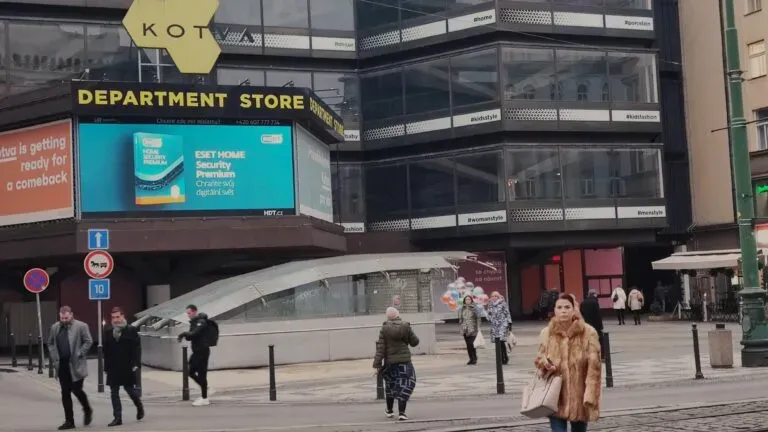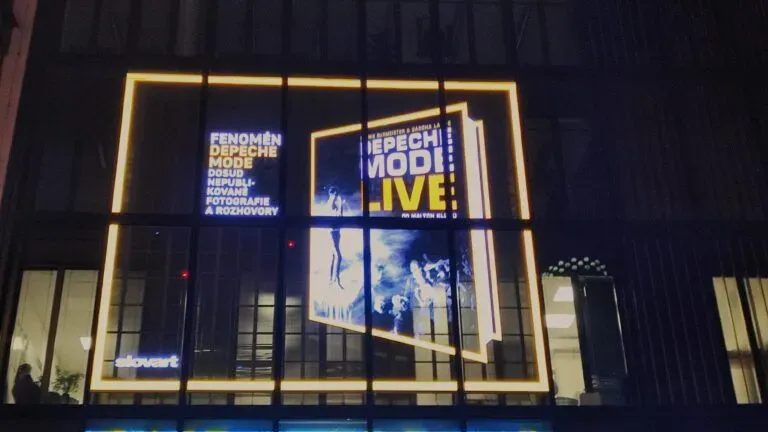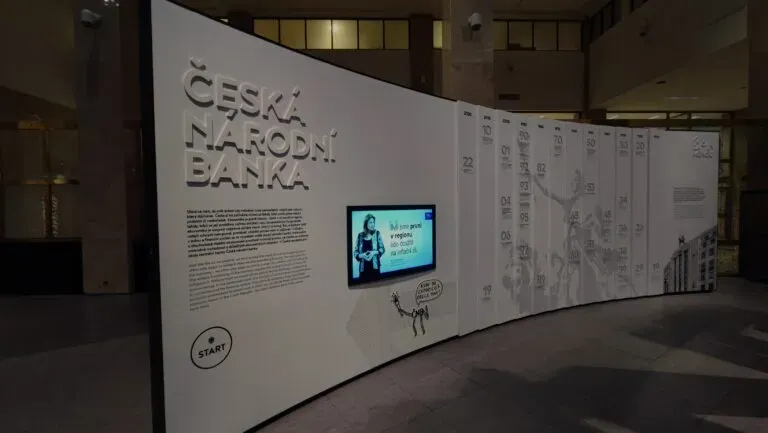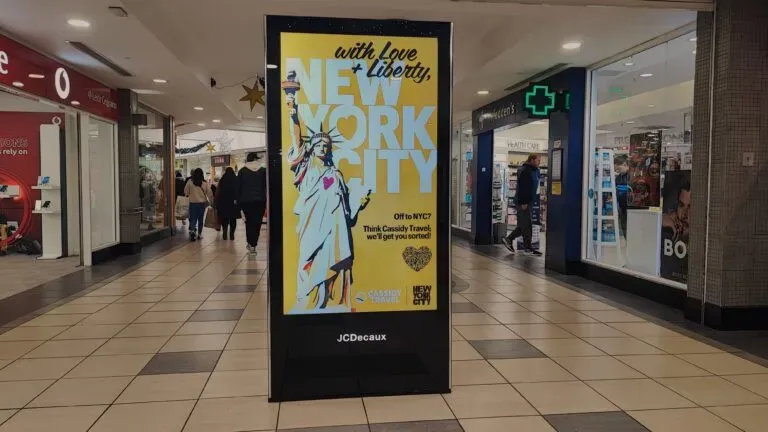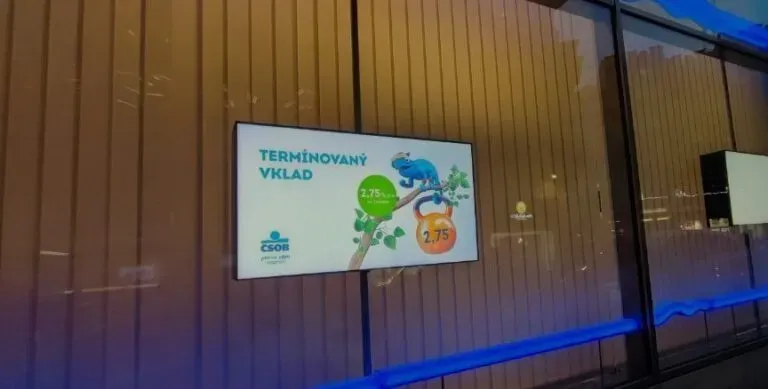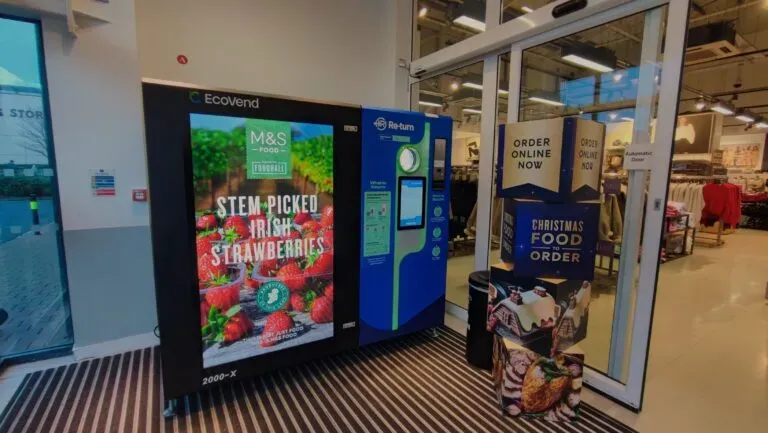Digital advertising on LED facades is an effective tool for business in 2025
A media facade is digital advertising based on LED screens or LED panels installed on a building.
This type of advertising structure is used for broadcasting advertising messages, video content, and for the decorative design of buildings. The advertising solution is based on equipment controlled by specialized software for LED systems.
Why is a media facade needed?
Media facades are used to solve various tasks:
– Outdoor advertising is the primary use of media facades.
– Broadcasting digital video ads or TV programs.
– Decorating the building and surrounding area.
– Interactive control for DOOH, for example, during mass events.
Data formats
Media facades allow the display of data in various formats: text, graphics, animation, video, and even sound. Modern LED technologies ensure high-quality image reproduction.
Main types of media facades
1. Cabinet-based – constructions made of autonomous modules that include LED panels, a cooling system, and control software.
2. Slatted – a system based on metal slats on which LED modules are mounted.
3. Mesh – a lightweight structure made of a flexible mesh with LEDs, which provides a high level of transparency and can be mounted on any building elements.
4. Cluster-based – an ideal solution for buildings with complex facades. Individual LED clusters can be mounted on cables, allowing for a system adapted to the building’s shape.
Advantages of LED media facades
– Bright and clear color for high-quality digital advertising.
– Long service life of LED systems, ensuring reliability.
– Low energy consumption when operating large media facades.
– High resistance to shocks and vibrations.
– Safety due to low heat emission and the absence of high voltages.
LED-based media facades provide better color reproduction and high brightness even in sunny weather, making them ideal for digital advertising and interactive use.
Advertising on media facades: key advantages
This type of outdoor advertising has several undeniable advantages:
– The ability to show advertising information to a wide audience.
– High efficiency due to the fact that dynamic images are guaranteed to attract attention.
– Increased loyalty to the products and services promoted via media facades.
What to consider when choosing
First, it is important to understand what information will be broadcast on the outdoor LED screen and at what time of day it will operate. To display advertising, a bright and clear image with realistic colors must be ensured.
Second, you should determine the location of the media facade and check whether the building can support the load from the LED screen. It is advisable to consult specialists with extensive experience in installing such structures.
An important criterion is the pixel pitch, meaning the distance between the LEDs. The smaller the pitch, the clearer the image, but the cost of the structure increases. If the screen is located far from viewers, you can save on pixel pitch.
Advantages of advertising on LED screens
LED screens allow the display of not only static but also dynamic images. This makes it possible to broadcast videos of various lengths, enabling the presentation of large amounts of information.
The information is presented in an attractive format. A bright, high-resolution image with various effects is sure to catch people’s attention. The effect is even more noticeable when both visual information and sound are used.
Even simple light structures with scrolling text or animated images draw attention. A full LED screen that broadcasts high-resolution video content is much more effective than traditional posters.
Another advantage is the ability to quickly change or adjust information using LED screen software. New content can be uploaded via a flash drive, cable network, or the internet. You can conduct A/B testing and choose the most effective advertising materials.
LED screens are easy to maintain and can operate around the clock. They are suitable for both indoor and outdoor spaces. Modern technologies allow for variations in screen sizes and characteristics, providing optimal solutions for different locations.
Finally, LED screens allow the display of any information. For example, near city landmarks, you can alternate between advertising videos and information about the history of these places using DOOH (Digital Out of Home) software.
LED screens are becoming an integral part of the modern urban environment, especially considering the possibilities opened up by LED software and DOOH software. Thanks to these technologies, advertising on streets, in public spaces, shopping centers, and other locations has reached a new level of interactivity and effectiveness.
One of the main advantages of DOOH advertising is its adaptability. Advertising companies can use networks to broadcast their content at any point in the city, at any time. They allow for the adjustment of content to specific events or audiences. For example, in the morning, large LED screens near office centers can display business service advertisements, while in the evening, in parks or stadiums, the focus can shift to entertainment content.
Software plays a key role in centralizing and automating the content management process. With a centralized video management system, advertisers can quickly change ads, schedule their display times, adjust the frequency of appearances, and track the results of advertising campaigns in real-time. This allows for a more flexible response to changing market conditions or specific audience needs.
In addition, LED screens provide the ability to work with various content formats. This can include not only traditional video ads but also interactive multimedia elements, graphic effects, and animation. This makes advertising campaigns more appealing and memorable to viewers, thereby increasing communication effectiveness with the audience.
A feature of modern DOOH Display Solutions is the ability to scale advertising campaigns. Advertisers can simultaneously cover a vast number of locations, creating global advertising networks. This allows the same content to be broadcast on a large number of screens, significantly increasing brand recognition. Additionally, such technology enables localized campaigns targeting specific regions or consumer groups.
With LED software, advertisers can integrate ads into any urban environment — from small neighborhood squares to the main streets of metropolises. LED screens provide the ability not only to display videos and images but also to use them as a tool for creating interactive spaces where advertising becomes part of urban life.
Moreover, an important aspect is that the centralized video management system allows advertisers to test and adjust advertising materials in real-time. This makes it possible to conduct A/B testing of different content formats to determine which is better perceived by the target audience, ultimately increasing the return on investment in the advertising campaign.
DOOH advertising also provides the opportunity to integrate informational and social messages alongside commercial ones. For example, on LED screens in public places, advertisements can alternate with important announcements for citizens or information about current events. This makes the advertising more useful and socially significant, which increases audience trust.
Thus, the use of LED screens for outdoor advertising opens new opportunities for businesses. Thanks to modern technologies and flexible solutions, companies can more effectively deliver their messages to a wide audience, create striking visual impressions, and remain relevant in changing market conditions.
The ability to promptly update content, adapt to various locations, and integrate with other communication channels makes LED advertising a powerful tool for capturing attention and maintaining interest in the brand. As a result, investments in such solutions contribute not only to increased brand recognition but also to enhancing overall business effectiveness.
Advision — Content Management System for remote management and media planning of video and audio content broadcasting. We help offline businesses and advertising companies automate their workflows and implement a robust Digital Signage infrastructure using our proprietary software and hardware solutions.
Contact us, and we will help you implement the most modern technologies to solve your problems!
Share the news



